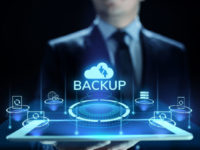Regardless of size, every business gets hurt when downtime strikes. Small and medium enterprises (SMEs) take a big hit when their systems go down, hence the growing adoption of disaster recovery-as-a-service (DRaaS).
Cloud-based backup and disaster recovery solutions are often at the top of the list when considering DRaaS solutions. It allows businesses to access data anywhere, anytime, with certainty because the best disaster recovery clouds are highly distributed and fault-tolerant.
What does DRaaS do and why does it matter?
- Replication: Distributed Backups Maximise Data Protection
Data replication is the process of updating copies of data in multiple places at the same time. Replication serves a single purpose: it makes sure data is available to users when they need it. Data replication synchronises data source with backup target databases, so when changes are made to source data, it is quickly updated in backups. Companies can also reduce their source database workloads for analysis and reporting functions by replicating subsets of source data to backup targets. - Image Management: Managing and Maintaining Backup Images
As companies add more backups over time, they need to manage these accumulated images and the storage space the images consume. Image management solutions with a managed-folder structure allow companies to spend less time configuring settings on backups. These solutions can also provide image verification so that backup image files are ready and available for fast, reliable recovery. To reduce restoration time, risk of backup file corruption, and reduce storage space required, image management solutions can automatically consolidate continuous incremental backup image files. Companies can balance storage space and file recovery by setting policies that suit their needs. - Failover: The Core Driver for Business Continuity
Failover is a backup operational mode that switches to a standby database, server, or network if the primary system fails or is offline for maintenance. Failover ensures business continuity by seamlessly redirecting requests from the failed or downed mission-critical system to the backup system. The backup systems should mimic the primary operating system environment and be on another device or in the cloud. With failover capabilities for important servers, backend databases, and networks can count on continuous availability and near-certain reliability. While failover integration may seem costly, it’s crucial to bear in mind the incredibly high cost of downtime. Think of failover as a critical safety and security insurance policy. - Failback: Getting Back to Normal
Failback is the follow-on to failover. While failover is switching to a backup source, failback is the process of restoring data to the original resource from a backup. Once the cause of the failover is remedied, the business can resume normal operations.
In order to make sure the disaster recovery solution can run the company’s workloads and sustain the operations for as long as necessary, regular failback testing is a critical part of the disaster recovery plan and will save critical time when the company needs to get its house back in order.
Whether it’s a natural disaster like a bushfire or a flood, a regional power outage, or even ransomware, there is a strong business case for DRaaS. With DRaaS ensuring business continuity, no matter what happens, recovery from a sitewide disaster is fast and easy to perform from a disaster recovery cloud. Just an hour of downtime and the cost of lost data, lost productivity and reputation damage could pay for a year—or many years, for that matter—of DRaaS.














